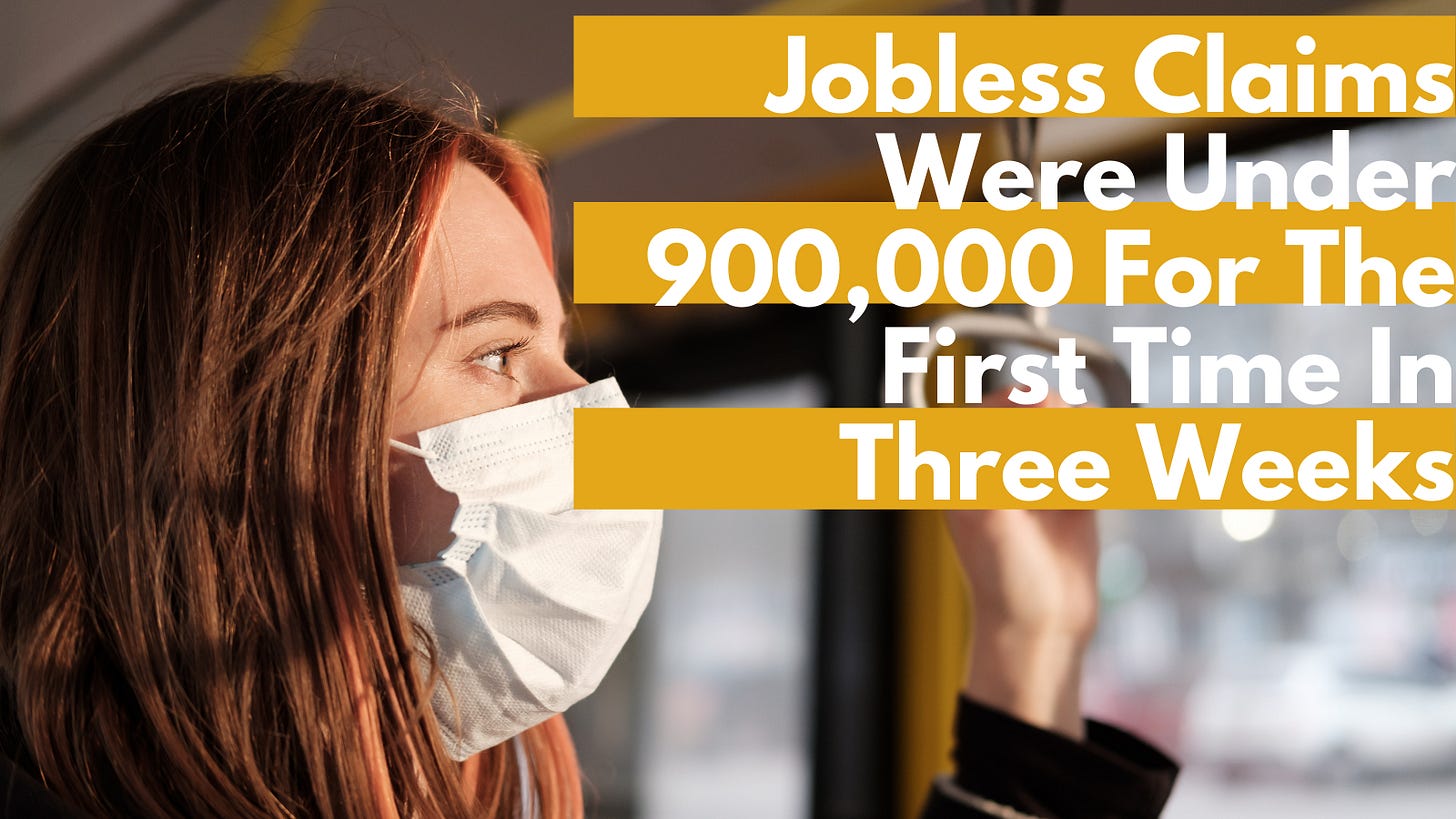Jobless Claims Were Under 900,000 For The First Time In Three Weeks, Giving Hope For Turning Around The Economy And Job Market
Would you have ever thought that we’d be excited to learn that weekly unemployment claims were under 900,000 for the first time in three weeks?
The United States Department of Labor reported Thursday that jobless claims for the prior week totaled 847,000. The number, while lower than previous weeks, is still at a stubborn historic high. Claims filed last week were lower—by 67,000—compared to the prior week. To put things into perspective, before the Covid-19 pandemic, jobless claims were never over 700,000.
In addition to the 847,000 claims, 426,856 workers filed for Pandemic Unemployment Assistance. This is a program created to offer financial aid to gig workers, contractors and the self-employed, who may not have been eligible for traditional benefits. Combining both types of unemployment claims, the number stands at 1.3 million. The total of Americans receiving unemployment benefits is at about a mind-numbingly 18.28 million.
Continued jobless claims, which count workers who have claimed benefits for at least two consecutive weeks, dipped to 4.8 million. Last year at about this time, these claims hovered around 200,000.
Economists claim that the job market is soft due, in large part, to the resurgence of the disease. To stem the spread of the virus, federal, state and local governments called for a combination of lockdowns, restrictions and limitations on businesses. This has hit the hotel, leisure, travel, restaurant, bar, concerts and other industries that rely upon large gatherings and face-to-face interactions. The job losses in these sectors have been staggering with nearly 500,00 in January alone.
Although the data looks stark, the stock market opened higher, based on the decrease in unemployment filings. It’s also believed that once the vaccines are rolled out and Americans are inoculated, the economy can be reopened for business. Federal Reserve Chair Jerome Powell said on Wednesday that the priority must be getting the American population vaccinated against Covid-19 and that no programs could get the economy fully back to normal until the pandemic is under control.
Daniel Zhao, senior economist and data scientist at Glassdoor, a company-ratings and job-listings website, said, “The virus is in the driver’s seat—there’s no getting around it.” Zhao added, “Until we control the pandemic, we can’t hope for a full recovery economically.”
President Joe Biden, in an effort to reinvigorate the economy, unveiled a two-step recovery plan to manage the Covid-19 pandemic and reinvigorate the economy. He called for a dramatic $1.9 trillion Covid-19 relief program, entitled the American Rescue Plan. This would be in addition to the previously passed $900 billion stimulus package. Biden said at the time of the announcement, “The crisis of deep human suffering is in plain sight.” In a call to immediate action to turn things around, he added, “There’s no time to waste. We have to act and we have to act now.”
His plan would provide $1,400 checks for most Americans, along with the $600 checks currently being sent out, and would raise the total amount to $2,000 per adult. Biden also called for an extra $400 a week in federal benefits for jobless Americans and extended a moratorium on evictions and foreclosures through September.
It seems that the key to getting out of this disaster is twofold: beat back the disease and provide financial programs to keep the doors of businesses open until then, so people can hang on until everything improves. Economists Nancy Vanden Houten and Gregory Daco of Oxford Economics wrote in a positive, hopeful note to clients, “Additional fiscal stimulus and broader vaccine diffusion should support an improved labor market in the spring.″



